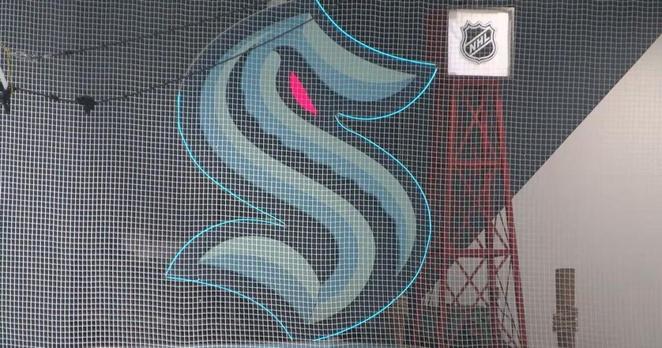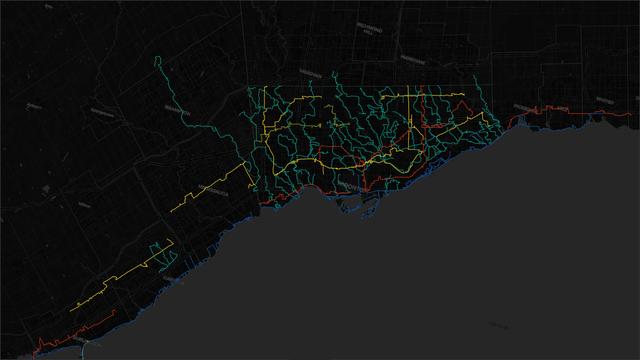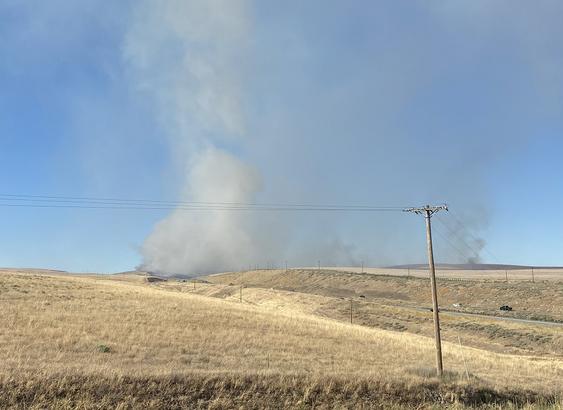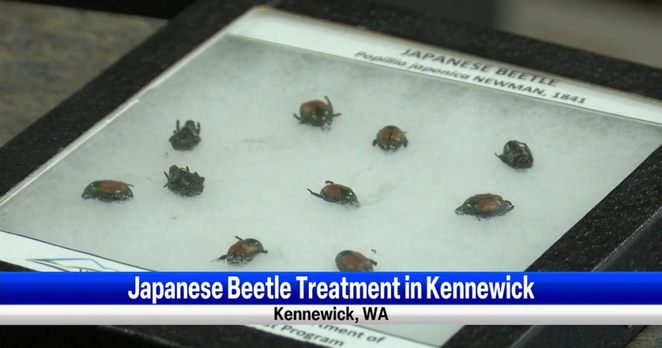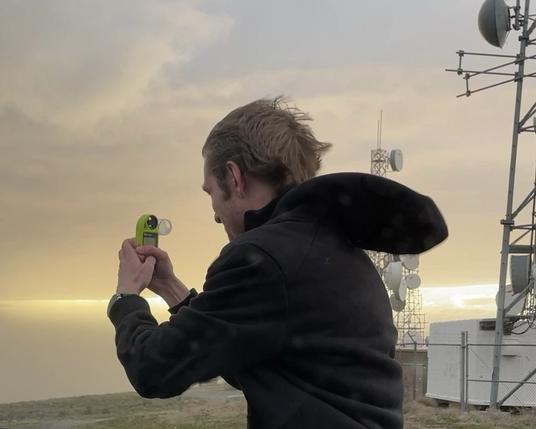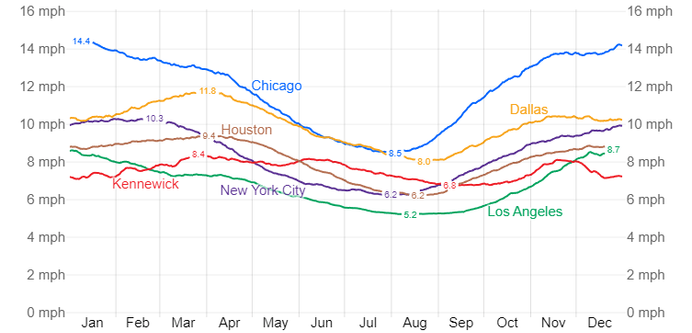FYI: Kennewick
#washingtonstate #pnw #kennewick #tricities #cascadia
RE: https://bsky.app/profile/did:plc:t2d2p5k3uzff7mfkakbujhpj/post/3m66jsfxgac2b
#TriCities
Tri-Cities police and fire departments face off in charity hockey game | News https://www.rawchili.com/nhl/299948/ #FireDepartment #Fundraiser #Hockey #HockeyEquipment #HockeyEvent #IceHockey #IceHockeyEquipment #kennewick #LocalNews #news #NonstopLocal #Pasco #PoliceDepartments #richland #RollerHockey #StickSports #ToyotaCenter(kennewick #TriCities #VariationsOfHockey #Washington #WashingtonNews
Mariners end nearly four-decade partnership with ROOT Sports as MLB takes over broadcasts | News https://www.rawchili.com/mlb/351222/ #Baseball #LocalNews #Mariners #MLB #National #news #Seattle #SeattleMariners #SeattleMariners #Sports #TopStories #TriCities #washington
Seattle Kraken seek breakthrough season under new coach Lane Lambert | News https://www.rawchili.com/nhl/208301/ #Hockey #Kraken #LocalNews #news #NHL #Seattle #SeattleKraken #seattle_kraken #SeattleKraken #sports #TopStories #TriCities #WallaWalla #Washington #yakima
3,000 km of walking #metroscapes across Greater #Toronto, , #Hamilton, #Niagara, the #Tri-Cities, #Guelph and #Ottawa. Roughly the driving distance from Charlottetown to Dryden. #hiking #cities
https://www.alojapan.com/1325269/chiawana-high-school-students-embark-on-cultural-exchange-trip-to-japan-news/ Chiawana high school students embark on cultural exchange trip to Japan | News #JapanTrips #LocalNews #news #TopStories #TriCities #trips #Washington The Brief • Chiawana High School students departed for Japan as part of a 40-year sister city exchange program between Pasco and Yokohama • The two-week cultural immersion experience allows students to live with host families and experience Japanese traditions firsthand • The program creates las
Warriors Invitational at CBC brings top 14U baseball teams to Tri-Cities | News https://www.rawchili.com/mlb/186540/ #Baseball #LocalNews #news #Sports #TopStories #TriCities #washington
WA Friends -- please boost this and contact friends living in the 4th and 5th Congressional District --
Medicaid currently provides health and long-term care coverage to 83 million low-income children and adults in the United States. This includes 1,860,000 children and adults in Washington State. Seventy percent of adults covered in Washington State are employed.
Financing for Medicaid is shared by states and the federal government. Medicaid spending is approximately 20% of the Washington State Budget, of which $20.1 billion—or 69% of the Medicaid budget—comes from the federal government. The state budget cannot make up the difference if federal funding is lost.
If Medicaid is defunded at the levels proposed by the House's version of H.R.1, the Washington State Health Care Authority reports that these reductions will have the effect of jeopardizing health care access for 1 out of every 4 Washingtonians. Ironically, the largest percentages of the population enrolled in Medicaid are in Republican Congressional Districts, 4 and 5. Rural hospitals have been cited as among the most affected health care services. They are already under-funded and rely on Medicaid funding for a significant portion of their patients and revenue.
#WA #Seattle #Tacoma #Spokane #TriCities #Yakima #Resist #ResistOfTheDay
Youth sports thrive, as young athletes embrace baseball https://www.rawchili.com/mlb/119475/ #AllStarTeam #Baseball #BristolLittleLeague #Coaching #TeamworkSkills #TriCities #YoungAthletes #YouthSports
Tri-City Americans Host Free “Meet Your Seat” Event for Hockey Fans at Toyota Center in Kennewick | News https://www.rawchili.com/nhl/77760/ #Hockey #LocalNews #news #sports #TopStories #TriCities #WallaWalla #Washington
New article: High fire danger for Lower Columbia Basin and Yakima Valley on Tuesday
ingallswx.com/2025/06/10/h...
#WAwx #WAfire #TriCities #weather
High fire danger for Lower Col...
High fire danger for Lower Columbia Basin and Yakima Valley on Tuesday
Hot temperatures continue for the Inland Northwest on Tuesday with the upper level ridge dominating conditions moving slowly eastward. As the ridge moves on, breezy winds are forecast to develop in the Columbia Basin and Yakima Valley this afternoon.
Westerly winds won’t be particularly strong, gusting only to about 30 mph (50 km/h), but with highs reaching above 100°F (38°C) and relative humidity below 20% wildfires will be easy to start and quick to spread.
Ingalls Weather thanks the support it gets from donors. Please consider making a small donation at this link to help me pay for the website and access to premium weather data.
These conditions have prompted the National Weather Service in Pendleton to issue a Red Flag Warning until 20:00 Tuesday. The alert includes the Tri-Cities, Yakima, and Ellensburg. The National Weather Service office in Spokane issued a similar alert for Wenatchee. Hermiston and Pendleton are excluded from the alerts but caution should still be exercised in those areas.
While Wednesday is forecast to be cooler, it will still be hot. Westerly flow over the Pacific Northwest will bring in some downsloping off the Cascades. Downsloping winds dry as they descend, leading to another day of elevated fire danger in the Yakima Valley and Columbia Basin.
Be fire smart by limiting outdoor burning, not throwing cigarette butts out of vehicles, and not parking in tall grass. Ensure that your lawn is cleared of flammable debris. In the Eastern Washington desert, just about anything can start a fire in the dry grasses. A few years ago sparks from tow chains started a fire that burned Rattlesnake Mountain, for example.
Also make sure that you have a go bag prepared in case you need to make a hasty exit. This should include water, food, entertainment for children, some cash, medicine, and important documents.
The vast majority of people won’t need to evacuate but preparation ahead of time makes the process faster if you are threatened. In 2018, a wildfire south of Kennewick ended up burning 5000 acres (2000 ha) and destroyed five homes.
Temperatures continue to cool as the week progresses with highs in the Tri-Cities moderating toward the mid-80s (28°C) by Friday. Some light rain is possible in and west of the Cascades thanks to a weak cold front on Thursday. That may bring some more wind to Eastern Washington but won’t be strong enough for decent rainfall.
New article: High fire danger for Lower Columbia Basin and Yakima Valley on Tuesday
Eyewitness to History: The 1980 Eruption of Mount St. Helens
Author note: This article contains the memory of my great-grandfather Charles Mulvey who was working on the Hanford Site near Richland, Washington when Mount St. Helens erupted. A few days after the eruption, he wrote this short essay about his experience. It was recently found by my aunt Diane Izzo when she was looking through family effects. The text provided below has no alterations from the original.
May 20, 1980
Well, the Spirit Mountain did as the Indians have been telling us it would do. It spoke real loud and was heard as far as Spokane anyway. It seems Mount St. Helens still has a lot of life left.
So I guess I’ll make an attempt to give some of the sights, impressions, and feelings which I observed and felt during and after the eruption which occurred this past Sunday, May 18, 1980.
Ingalls Weather thanks the support it gets from donors. Please consider making a small donation at this link to help me pay for the website and access to premium weather data.
Mount St. Helens has been gradually changing from its former inactive status to active with mostly relatively mild eruptions and steam, ash emissions. The officials concerned and those persons observing the volcano have repeatedly given warning of the serious potential of a major eruption.
Sunday morning at approximately 0830 a.m. Mount St. Helens erupted with an explosion which blew the top 1300 feet off of the mountain and formed a horseshoe shaped crater. A huge cloud of ash and debris was reportedly blown to an altitude of 60,000 feet.
I was at work and doing my job assignment this day. I heard the blast and thought that that was no sonic boom but possibly a large dynamite explosion. The time is not definite but seemed to be just before 0900 a.m.
There was earth movement reportedly felt by others, however I felt no movement of which I was aware.
I continued with my work routines and sometime near 1000 I noticed the western sky getting dark and appeared smoky as if the fruit growers in the Yakima Valley were fogging to save the fruit crop. Of course, the day had started out clear, sunny and warm. Fruit fogging was out of the question.
The sky continued to darken rapidly and a radio transmission was heard telling all listeners that Mount St. Helens had erupted. More information would be transmitted as it was received.
By 1030 the sky was rapidly being covered with a huge, flat bottomed cloud which eventually covered all visible horizons completely blacking out the sun.
My job assignment was partly the responsibility of watching a pumping operation and the recording of operational data. At the 1100 time for a check of the pump and data the cloud had covered the sun and the northern and southern horizons and all except the east portions.
The westward facing field lamps were being activated. These field lamps light up with detection by a photo cell of approaching dark conditions.
By the time I had completed my periodic check of the pump operation and returned to the building, full darkness had occurred and the fallout of volcanic ash was underway. The darkness was equal to that of a moonless, starless, possibly cloudy stormy night.
During the next two hours the ash fall continued, with an appearance of a dry rain, if such were possible. The particles of ash ranged from a fine powder to a coarse sand. The coarse, sandy material was heavy, and the fine powdery material is extremely light, almost a talcum powder.
At the 1300 time check of the pump, the ground and all horizontal exposed surfaces were covered with ash to a depth range from one-eighth to one-quarter inch deep. The ash was evenly distributed and created considerable dust when vehicles were driven.
Light conditions at 1300 required use of a flashlight to observe numbers and dials. The pump incidentally was stopped at 1315 hours due to the hazardous conditions.
The ash fall continued heavy until approximately 1430 when the sky lightened again to daylight. A light dust ash fall continued. A dusty haze filled the air and it was necessary to don dust filters or face masks for working outside. Some samples of ash were taken for souvenirs at this time.
The light ash fall continued for the remainder of the day and possibly throughout the night. A souvenir ash sample of this light ash fall was taken the following morning from a surface which was clean at the time the initial ash fall samples were taken.
The volcanic ash fall covered a large area of eastern Washington. Roads and highways were closed due to extremely dusty conditions which made driving very difficult. People were warned to stay off the roads and to stay indoors.
The severity of the ash fall was relevant to the depth of the ground cover. This ranged from a trace to several inches. Towns and cities within the fallout area have encountered difficulty with removal of the volcanic ash.
The bus which picked us up at work and transported us home was a casualty of the dusty conditions. Dust clogged the filters and was pulled into the motor which failed due to the abrasive ash. Only the front part of the bus was visible as it approached. It was lost in dust back from the front wheels.
A light ash fall continued the following day with extremely dusty air conditions. Only essential work was being done, and usually only necessary stores (grocery, etc.) were open.
High winds have swept the area since the eruption which continually creates more dust conditions.
The featured image is of the eruption column from Mount St. Helens on May 18, 1980. (USFS)
https://www.alojapan.com/1227635/kennewick-included-in-washington-state-department-of-agricultures-japanese-beetle-treatment-area-news/ Kennewick included in Washington State Department of Agriculture’s Japanese Beetle treatment area | News #AgriculturalPestArthropods #agriculture #insects #InsectsAndHumans #Japan #JapanNews #Japanese #JapaneseBeetle #JapaneseNews #kennewick #LocalNews #news #NonstopLocal #Pasco #PestInsects #Pests(organism) #Richland #TriCities #WashingtonNews KENNEWICK, Wash. – For the first time ever, Kennewick has been added to the area where the Wa…
¿Son realmente tan ventosas las Tri-Cities? Depende de tu perspectiva
This article is available in English at this link.
Las personas que viven en las Tri-Cities (Kennewick, Pasco, Richland) suelen hablar del viento. A menudo, es para quejarse de lo ventosa que parece ser la zona. Las Tri-Cities ciertamente pueden experimentar fuertes vientos durante tormentas regionales, pero ¿cuánta de esta percepción se debe a sesgos de confirmación y de recencia durante dichas tormentas?
Naturalmente, la velocidad del viento varía en toda el área de las Tri-Cities. Las cimas de las colinas, los campos abiertos fuera de la ciudad y las zonas a lo largo del río Columbia experimentan vientos más fuertes porque hay menos obstáculos que bloqueen el movimiento del aire. También hay muchos días en los que las Tri-Cities experimentan poco o nada de viento.
Ingalls Weather agradece el apoyo que recibe de los donantes. Por favor, considere hacer una pequeña donación en este enlace para ayudarme a pagar el sitio web y el acceso a datos meteorológicos premium.
Este artículo analiza las condiciones promedio generalizadas para las Tri-Cities en su conjunto. Cabe destacar que las personas que viven en lugares como Canyon Lakes probablemente verán vientos más fuertes que quienes están dentro del Richland Bypass.
Perspectiva del Noroeste
Comparación de vientos promedio en ciudades seleccionadas del Noroeste. (WeatherSpark)Los habitantes de las Tri-Cities viven en el área metropolitana más ventosa entre las ciudades medianas y grandes del Noroeste del Pacífico. Solo Bend se acerca a lo que experimenta la zona, con vientos promedio en Bend que superan los de las Tri-Cities en diciembre, enero y principios de febrero.
El perfil de velocidades de viento en Spokane sigue de cerca el de las Tri-Cities, aunque con velocidades aproximadamente 1.5 mph (2.5 km/h) más bajas durante todo el año. Seattle y Eugene son las menos ventosas de este grupo.
Las comunidades más pequeñas en y cerca de los principales pasos montañosos del Noroeste del Pacífico son más ventosas que las Tri-Cities. A pesar de estar a solo media hora en coche al sur de Kennewick, Hermiston es notablemente más ventosa porque está más directamente en la trayectoria del viento que atraviesa el desfiladero del río Columbia.
Comparaciones a nivel nacional
Comparación de vientos promedio entre Kennewick y las cinco áreas metropolitanas más grandes de los Estados Unidos. (WeatherSpark)Sin embargo, solo en el Noroeste del Pacífico destaca el viento de las Tri-Cities. Veamos primero las cinco áreas metropolitanas más grandes de los Estados Unidos (Nueva York, Los Ángeles, Chicago, Dallas y Houston).
De este grupo, solo Los Ángeles experimenta menos viento que las Tri-Cities. Houston y Nueva York ven cómo sus vientos promedio caen por debajo de los de las Tri-Cities en verano, pero lo compensan con vientos más fuertes durante el resto del año. Por supuesto, Houston también experimenta huracanes ocasionales.
Chicago se gana su apodo de “La Ciudad de los Vientos”. Su mes más calmado es julio, con una velocidad promedio de 8.7 mph (14.0 km/h), superior incluso a los meses más ventosos de las Tri-Cities: marzo, abril y junio, con 8.1 mph (13.0 km/h).
Comparación de las velocidades medias del viento en Kennewick y algunas ciudades seleccionadas de los High Plains. (WeatherSpark)La parte más ventosa del interior de los Estados Unidos contiguos se encuentra en los High Plains, justo al este de los Rocky Mountains. El este de Wyoming es especialmente ventoso, algo que los viajeros frecuentes de la I-25 y la I-80 al este de Laramie conocen muy bien.
El terreno relativamente plano de esta región, combinado con la profundización de los sistemas de baja presión en el lado sotavento de los Rockies, genera vientos fuertes a medida que estas perturbaciones se desplazan hacia el este a través de América del Norte. Alguien que se encuentre al aire libre en las High Plains probablemente sentirá una ligera brisa incluso en ausencia de un sistema de baja presión intenso.
Las tormentas de viento son más frecuentes y más intensas en las High Plains. Entre 2010 y 2019, el Servicio Meteorológico Nacional emitió un promedio de dos advertencias de vientos fuertes por año para Tri-Cities. En comparación, la Cordillera Frontal de Colorado recibió alrededor de seis advertencias anuales, mientras que en algunas partes del sureste de Wyoming se emitieron más de 30.
Causas del viento en el Columbia Basin
Gráfico que muestra la frecuencia relativa de la dirección y velocidad del viento en el Aeropuerto de las Tri-Cities. (Iowa Environmental Mesonet)En el nivel más básico, el viento es causado por diferencias en la presión del aire, moviéndose de regiones de alta presión hacia regiones de baja presión. Este viento es canalizado por el relieve regional, como las Cascades, el río Columbia e incluso los Rockies. La magnitud de la diferencia de presión entre dos ubicaciones se llama gradiente de presión.
Los vientos del oeste y suroeste que atraviesan los pasos de las Cascade dominan el patrón de viento en la Columbia Basin. Casi el 64% de las observaciones horarias en el aeropuerto de las Tri-Cities en Pasco registraron vientos con un componente occidental, incluyendo el 95% de las observaciones cuando el viento sostenido superaba las 40 mph (64 km/h).
Para visualizar cómo el aire atraviesa las Cascade, imagina una compuerta abierta en un canal de riego. Las paredes de hormigón se extienden hacia adentro desde el borde, pero una abertura en el centro permite que el agua pase. El nivel del agua es más alto detrás de la compuerta que delante de ella. El agua se acelera y se vuelve más turbulenta al pasar por la compuerta antes de calmarse más adelante.
En esta analogía, el desfiladero del río Columbia y Snoqualmie Pass son compuertas de agua, y las Montañas Cascade son las paredes de hormigón. La alta presión a menudo se acumula detrás de los sistemas regionales, como los frentes fríos, formando el “agua” detrás de la compuerta. Las Cascade actúan como una barrera formidable para la alta presión entrante, generando vientos fuertes a través de los pasos montañosos.
El viento como peligro meteorológico
Aunque las Tri-Cities pueden no ser tan ventosas como muchos otros lugares en los Estados Unidos, el viento sigue siendo un peligro significativo. Es la causa meteorológica más común de muertes en el área de advertencia de la oficina del Servicio Meteorológico Nacional en Pendleton, que incluye la Columbia Basin.
Además del polvo, los vientos fuertes pueden levantar objetos sueltos. Ejemplos notorios en las Tri-Cities incluyen trampolines voladores y enormes acumulaciones de plantas rodadoras. Una brisa moderada, altas temperaturas y baja humedad relativa combinadas crean un riesgo significativo de incendios.
El criterio para una advertencia de vientos fuertes varía de un lugar a otro, pero generalmente se emiten cuando los vientos sostenidos están entre 40 y 73 mph (64-117 km/h) o cuando hay ráfagas más fuertes.
Coquitlam, Port Moody weigh procurement options in wake of U.S.-Canada trade war
#Coquitlam #BC #Canada #PortMoody #TradeWar #Trade #CanadaUS #Procurement #LocalEconomy #BuyCanadian #Tariffs #EconomicImpact #MunicipalPolicy #TriCities #BusinessSupport
https://the-14.com/coquitlam-port-moody-weigh-procurement-options-in-wake-of-u-s-canada-trade-war/
Winter weather advisory for possible freezing rain in Columbia Basin
A frontal boundary is forecast to bring widespread precipitation to the Pacific Northwest over the next few days. This will reach the coast on Tuesday afternoon and spread east of the Cascades early Wednesday.
For the Tri-Cities, Yakima, Hermiston, and nearby areas this will mostly be in the form of rain. That said, brief periods of freezing rain and snow are possible with overnight temperatures dropping near freezing. Temperatures at the surface will warm slower than temperatures aloft, creating the freezing rain risk.
Ingalls Weather thanks the support it gets from donors. Please consider making a small donation at this link to help me pay for the website and access to premium weather data.
This risk has prompted the National Weather Service in Pendleton to issue a winter weather advisory for the Lower Columbia Basin, Yakima Valley, and Blue Mountain foothills. The alert is in effect from 02:00 to 12:00 Wednesday with a light glaze of ice possible. A quick inch (2 cm) of snow may also be observed in some areas.
Not everyone in the alert area will see freezing rain or snow. In general the greatest risk of winter precipitation is right around the morning commute hours. The meteorologists in Pendleton specifically note that “it’s not a slam dunk for pinpointing exact areas.”
By noon on Wednesday the lower elevations should have their temperature inversions scoured out enough for all the additional precipitation to fall as rain. Outside of the inversion zone, snow levels will be above the elevation of the Cascade mountain passes.
Rain ends from west to east Wednesday night but an active weather pattern is forecast to remain in place for at least the remainder of the week with showers in and west of the Cascades. Rain showers return to the Columbia Basin as early as Saturday evening with an atmospheric river aimed somewhere in the Pacific Northwest.
This atmospheric river will be a classic pineapple express with moisture sourced from near Hawaii. Warming temperatures associated with this event will likely raise highs to near 60°F (15°C) in the Tri-Cities on Sunday that will last into next week. Snow levels are forecast to reach around 7000 feet (2100 m) in the Cascades.
The National Weather Service is monitoring this situation for possible flooding as heavy rain falls on heavy mountain snowpack. Current modeling shows sharp rises in rivers draining the Cascades but as of Tuesday morning flooding is not forecast on medium-size or large rivers in the Yakima Valley and Columbia Basin.
A diagram showing how freezing rain and sleet form. (NWS)Freezing rain occurs when there is an area of warm air present on top of an area of below freezing temperatures. This sort of scenario is common in Eastern Washington and Eastern Oregon, large areas of which lie in valleys and basins.
Because cold air is denser than warm air, it sinks to the bottom of the Columbia Basin. When a warm front like the one forecast this week comes in, that warm air can override or run on top of the cold air trapped at the surface.
Daytime heating and/or breezy conditions are often needed to mix the atmosphere up and allow the warmer air to reach down to the surface. During the winter months the sun angle at this latitude is low enough that heating from the sun in cloudy conditions is not enough to mix the atmosphere on its own.
Cold air trapped under warm air is referred to as a temperature inversion. We are reaching the end of winter inversion season, which is why freezing rain is not forecast to be widespread or last all day, but it will still take time to warm up low-elevation communities.
The nature of this event is such that travelers may come across icy patches unexpectedly. Plan for extra time when going somewhere on Wednesday morning. Remember that overpasses and bridges are the most likely areas to find ice on roads.
Love chatting about the #weather with one of the radio stations in my hometown. Here's a quick look at what has so far been a snowless winter in the #TriCities (WA).
keyw.com/no-snow-tri-...
#WAwx #weather
Are We Facing History? No Snow...


